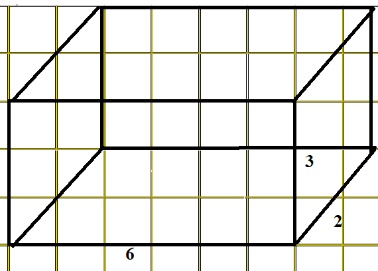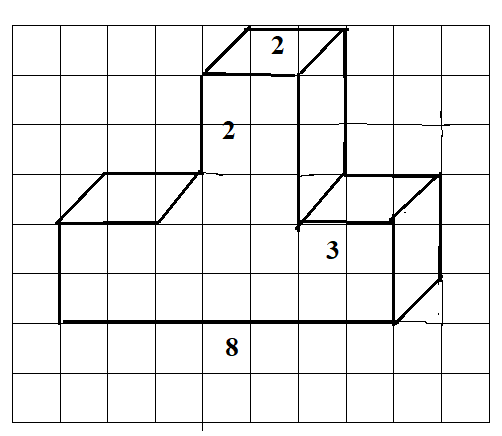
Use isometric dot paper and make an isometric sketch for each one of the given shapes:




Answer
491.7k+ views
Hint: We will sketch the isometric figures by first drawing the front faces of the figures. To get the length of
Complete step-by-step answer:
Isometric dot paper is a paper with a series of guide-points which helps to draw 3-D figures easily.
We will draw the given 3D figure using isometric dot paper.
We join 2 dots to get 1 unit length.
To get the length of
In the first figure, we can see the face of the rectangle is 6 units in length and has a breadth of 3 units.
Hence, we will first draw a rectangle connecting 7 dots horizontally and 4 dots vertically.

Now, we will draw 4 parallel lines connecting 3 dots from each corner to draw a length of 2 units.

Then, join all the vertices to form a cuboid.

Similarly, we will draw the other figure, by first drawing the front face of the shape.

Draw the corresponding parallel lines.

Then, join all necessary vertices.

Erase all the unnecessary lines.

Note: Isometric figures can be drawn using straight lines. Horizontal lines are called sleeping lines and vertical lines are called standing lines. We cannot draw all the faces on an iso-metric page of a 3D diagram. But the faces drawn give a pseudo effect of a 3D figure.
Complete step-by-step answer:
Isometric dot paper is a paper with a series of guide-points which helps to draw 3-D figures easily.
We will draw the given 3D figure using isometric dot paper.
We join 2 dots to get 1 unit length.
To get the length of
In the first figure, we can see the face of the rectangle is 6 units in length and has a breadth of 3 units.
Hence, we will first draw a rectangle connecting 7 dots horizontally and 4 dots vertically.

Now, we will draw 4 parallel lines connecting 3 dots from each corner to draw a length of 2 units.

Then, join all the vertices to form a cuboid.

Similarly, we will draw the other figure, by first drawing the front face of the shape.

Draw the corresponding parallel lines.

Then, join all necessary vertices.

Erase all the unnecessary lines.

Note: Isometric figures can be drawn using straight lines. Horizontal lines are called sleeping lines and vertical lines are called standing lines. We cannot draw all the faces on an iso-metric page of a 3D diagram. But the faces drawn give a pseudo effect of a 3D figure.
Latest Vedantu courses for you
Grade 7 | CBSE | SCHOOL | English
Vedantu 7 CBSE Pro Course - (2025-26)
School Full course for CBSE students
₹45,300 per year
EMI starts from ₹3,775 per month
Recently Updated Pages
Master Class 11 Economics: Engaging Questions & Answers for Success

Master Class 11 Business Studies: Engaging Questions & Answers for Success

Master Class 11 Accountancy: Engaging Questions & Answers for Success

Master Class 11 English: Engaging Questions & Answers for Success

Master Class 11 Computer Science: Engaging Questions & Answers for Success

Master Class 11 Maths: Engaging Questions & Answers for Success

Trending doubts
State and prove Bernoullis theorem class 11 physics CBSE

1 ton equals to A 100 kg B 1000 kg C 10 kg D 10000 class 11 physics CBSE

State the laws of reflection of light

One Metric ton is equal to kg A 10000 B 1000 C 100 class 11 physics CBSE

1 Quintal is equal to a 110 kg b 10 kg c 100kg d 1000 class 11 physics CBSE

Difference Between Prokaryotic Cells and Eukaryotic Cells




